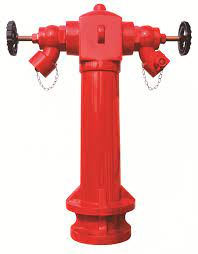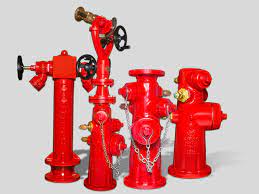A Fire Hydrant System is a network of pipes, valves, and hydrants designed to provide a ready and reliable water supply for firefighting activities. This system is a critical component of fire protection infrastructure in urban areas, industrial complexes, and buildings. Here are key components and features of a fire hydrant system:
- Hydrants: These are above-ground fixtures with outlets that can be connected to fire hoses. Firefighters can attach hoses to hydrants to access pressurized water for firefighting.
- Underground Pipes: A network of underground pipes connects the hydrants to a water source, such as a municipal water supply or a dedicated water tank. These pipes ensure the flow of water to the hydrants.
- Valves: Valves control the flow of water within the hydrant system. They can be opened or closed to regulate water supply to specific sections or hydrants, allowing flexibility in firefighting operations.
- Water Source: The hydrant system is typically connected to a reliable water source, which may include a municipal water supply or a dedicated water reservoir. The system must have sufficient water pressure to meet firefighting needs.
- Pressure Reducing Valves: In some cases, pressure reducing valves are employed to maintain consistent water pressure within the hydrant system, ensuring optimal performance during firefighting operations.
- Color-Coding: Hydrants are often color-coded to indicate the available water flow and pressure. This helps firefighters quickly assess the capabilities of each hydrant.
- Maintenance Connections: Fire hydrant systems may have designated connections for maintenance purposes, allowing for flushing, testing, and ensuring that the system is in good working condition.
Fire hydrant systems play a crucial role in providing a quick and accessible water supply during firefighting emergencies. They are strategically located in public areas and are a vital resource for firefighters to efficiently combat fires and protect lives and property. |













